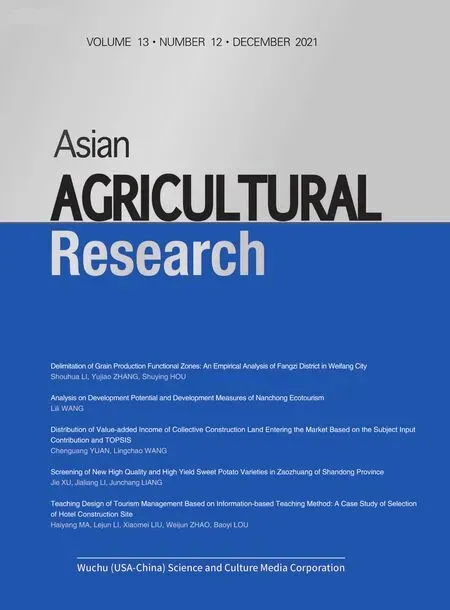Agricultural Water Resources Utilization and Management under Agricultural Safety Aim Based on Fuzzy Neural Network Algorithm
2021-02-18ShengxinWAN
Shengxin WAN
School of Economics and Management, Xianyang Normal University, Xianyang 712000, China
Abstract [Objectives] To explore the agricultural water resources utilization and management under the agricultural safety aim. [Methods] Fuzzy neural network algorithm was adopted. The evaluation model of agricultural water resources utilization and management carrying capacity based on quantitative system was established. [Results] With the remarkable improvement of China’s national income, great progress has been made in China’s agricultural development. However, in the process of agricultural safety production, the problem of sustainable development has not been noticed, the problem of water resources exceeding the limit bearing capacity frequently occurs. [Conclusions] It is of great significance to effectively solve the problem of water resources utilization and management. In the feasibility test for the algorithm, further tests on various indicators show that the research is feasible.
Key words Fuzzy neural network algorithm, Quantification system, Utilization and management of water resources
1 Introduction
At present, the situation of agricultural development in China has gradually slowed down, and the main reason is that Chinese government has become aware of the environmental pollution problem in China at this stage. This problem has already been experienced in the development of developed countries, but in the process of our past development, too much pursuit of economic development has led our government to ignore this problem. Now the comprehensive national strength of China has been significantly improved, so the problem that needs to be solved now is not the problem of economic growth, it is the sustainable development of water resources utilization and management, especially China has been advocating the issue of harmonious society in recent years, which also includes harmony between man and environment. The problem of exceeding the limit of carrying capacity of agricultural production resulted from the waste of water resource exists all the time, and this serious overrun has seriously affected the sustainable development of agriculture, and it will lead to a series of pollution problems.
The problem of the utilization of water resources exceeds the environmental carrying capacity is that the environmental carrying capacity of every area is certain, when the human enter, it can keep balance with the environment, and the environmental carrying capacity will not be destroyed at this time, but when too many human enter, many activities of mankind will seriously affect the regeneration function of nature, such activities as transitional grazing, deforestation and so on, which seriously affect the regeneration function of nature. The above problems also affect agricultural production, once nature loses its function of automatic repair, the environment in the area will cause irrevocable devastating blow.
2 Current situation of study
Based on the above problem, China’s agricultural bureaus and other organizations have issued relevant documents at this stage to prohibit excessive waste of water resources, however, this document does not have a large data quantification system as a support, it is only a rough calculation, which is not possible to limit water resources management, and it is even very different from the environmental carrying capacity of agriculture, it is ok if the utilization of water resources is lower than the environmental carrying capacity of agriculture, but if it is much more than the environmental capacity, then it will lead to a devastating blow to agriculture, especially in the aspect of agriculture. In view of the above problems, many experts in China have carried out related research to try to establish an evaluation system for carrying capacity of agricultural environment. The influence factors of environmental carrying capacity are excavated, and then the maximum value of agricultural environment carrying capacity is simulated by using the quantitative system model to solve the problem of increasing agricultural water resources and environmental carrying capacity at this stage. In this study, we used the fuzzy neural network algorithm. The algorithm can not only identify factors affecting the utilization and management of agricultural water resources, but also can make weighted analysis on the relevant factors of the agricultural environment carrying capacity according to different weight values, the model is used to categorize these impact factors, and finally, the results of agricultural water resources utilization and management under the goal of agricultural safety are obtained.
3 Methods
3.1 Construction of water resource management model in agricultural production
It can be known according to above situations, there is a lack of a continuous algorithm that can calculate quantitatively the environmental carrying capacity at present and can solve the problems of agricultural water resources in China at this stage, but now there is no such system model that is capable of precise quantification. Thus, at this stage, many scholars have done related researches. Fuzzy neural network algorithm is used to carry on related researches. The agricultural water resource is an ecological water resource, ecological water resources need to integrate effectively the three aspects of society, economy and environment, and several factors are used to evaluate and analyze water resources in rural areas, the fuzzy neural network algorithm is a good combination of these points. Fuzzy neural network algorithm is actually a computer method evolved from a mathematical method, which is mainly derived from the main concepts of weighted mean in mathematical methods. It is known that weight coefficient is mainly used to solve the problem of multiple factors and the researched problem of carrying capacity of agricultural water resources and environment is such a multi factor problem, so the use of fuzzy neural network algorithm will match the target problem, and therefore, the fuzzy neural network algorithm is used as the central algorithm of this research in this study. Table 1 indicates the evaluation system of ecological water resources and environmental carrying capacity in an area and the weight of each factor:From Table 1, it can be seen that the agricultural water resources and environmental carrying capacity in area A is mainly affected by three factors: One is the natural environment. The natural environment mainly includes annual runoff volume, runoff time distribution rate and ambient air quality, the total weight of these factors is 40.5%, which is the largest proportion of the three factors, and this proves that the natural environment is extremely important in the composition of rural water resources carrying capacity, in addition, relevant indicators for this index are set, for the determination of the indicators in this research process is obtained based on a number of surveys and related literature, which is with great reliability, because these indicators will seriously affect the research results of ultimate carrying capacity, therefore, relevant indicators have been made after careful investigation; The second is the economic environment. The economic environment is 30.5%, and the weight of economic environment accounts for second of the expected value, it is known that the influence of the economic environment on rural water resources is also very large at this stage, in the period of economic depression, and the waste of water resources is more prominent in agricultural development. Neural network is one of the most widely used algorithms at present. This algorithm originated from the study of biological neural networks, then the research of artificial neural network was simplified to simulate neural network algorithm. The topology of the neural network is varied, and the two basic forms are introduced below: feed-forward network topology and feedback network topology, there structure diagrams are shown in Fig.1.
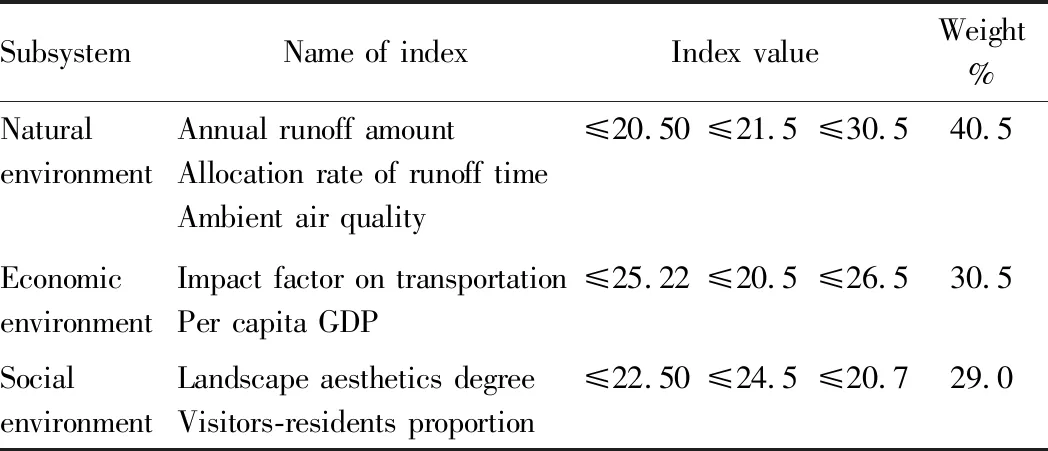
Table 1 Environmental carrying capacity of agricultural safety index and weight of various factors
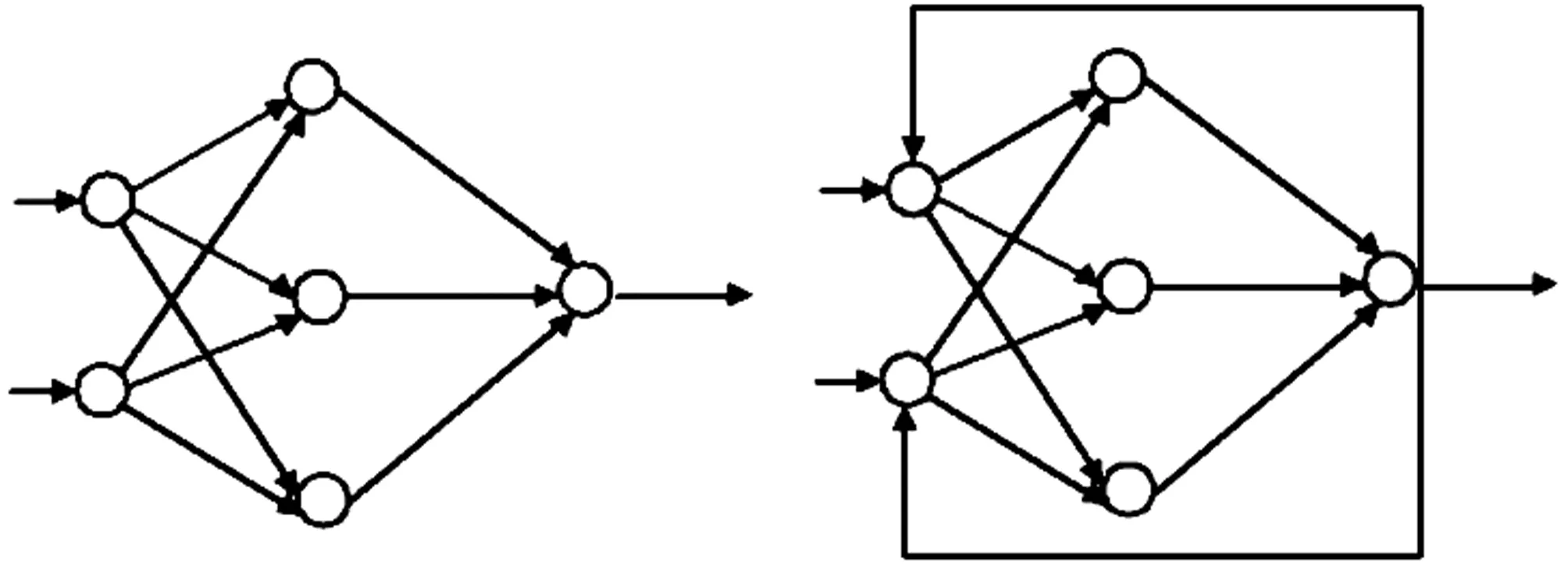
Fig.1 Feed-forward network topology and feedback network topology
Neural network, like other networks, is composed of three layers: output layer, hidden layer and input layer, then the computation of neural network will be analyzed and calculated step by step. It is needed to hypothesize the neural network algorithm before analyzing, because it can’t be completely consistent with the natural nervous system, so it needs to be assumed and established. The content of the hypothesis is shown in Table 2.
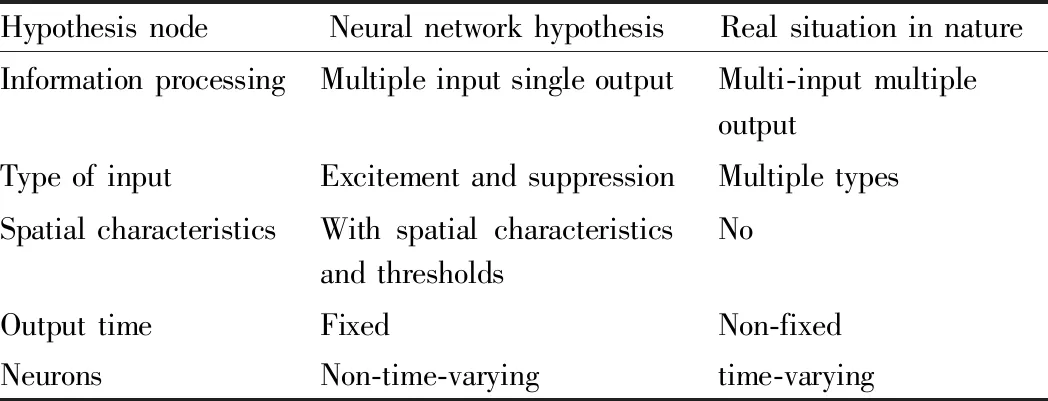
Table 2 Hypothesis content of neural network algorithm
In the remote control research, we used the progressive relationship of algorithm. Network learning is the error of output value and expected value of output layer, which is attributed to the "fault" of the connection weights and boudoir values of each artificial neuron, and the error is transferred layer by layer to the input layer, the error is "shared" to the neurons in each layer, the reference error is calculated, and the connection weight and the closing value is adjusted according to it until the error reaches the requirement. The learning process of the network is divided into two steps: the first step is to enter the training sample, set up the connection weights and thresholds of the first iteration, and gradually calculate the output of each artificial neuron from the input layer of the network. The second step is to modify the connection weights and thresholds, and to calculate the influence of the connection weights and thresholds on the total error from the output layer, and then the weights and thresholds of each connection are modified. The above two processes are repeated alternately until the error reaches the set target error. In this way, the use of water resources in agricultural production can be controlled and adjusted in a timely manner.
3.2 Formula application calculation of fuzzy neural network algorithm
In the calculation of fuzzy neural network algorithm, the first step is to enter the training sample, set up the connection weights and thresholds of the first iteration, and gradually calculate the output of each artificial neuron from the input layer of the network. The second step is to modify the connection weights and thresholds, and to calculate the influence of the connection weights and thresholds on the total error from the output layer, and then the weights and thresholds of each connection are modified. The above two processes are repeated alternately until the error reaches the set target error. The calculation of the connection weights and threshold adjustments of each neuron as follows:x
,x
,x
, …,x
is set as the information input of the optic neuron,w
1,w
2,w
3, …,w
is the weight coefficient ofi
neurons andx
,x
,x
, …,x
, respectively;y
is the output ofi
neurons. The incentive functiondetermines the output mode. The output relationship can be expressed as:
(1)
Transformation:

(2)
x
(t
) is set as the input information from neuronI
, which is accepted by neuronj
att
time.o
(t
) is set as the output information of the neuronJ
att
time. Then the expression of neuron state can be expressed as:
(3)
whereτ
is outstanding delay between input and output,T
is the threshold of neuron,w
is the weight value,f
is the rule of neural transformation mapping. The following formula is the time integration that the neurons do not take into account, the formula is used to complement here.
(4)
For the fuzzy neural network algorithm, the calculation process here is relatively simple, and of course, it is relatively concerned from fuzzy neural network algorithm. The computational process of fuzzy neural network algorithm is shown in Fig.1 below. Through the calculation model in the following diagram, not only can the fuzzy neural network algorithm be calculated, moreover, the fuzzy neural network algorithm that needs really studying can be studied through further optimization.
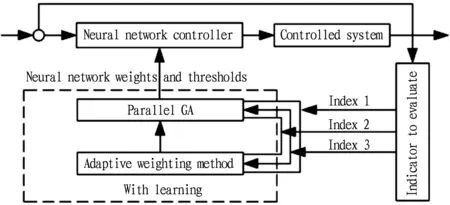
Fig.2 The computational process of fuzzy neural network algorithm
4 Results and analysis
The management model of agricultural production water resources is constructed, and finally the fuzzy neural network algorithm based on our research needs testing. The new algorithm for detecting the utilization of water resources includes data generation, data storage, data organization, data query, and customer service and so on. Thus, a complete detection system has been formed. The computer realizes the collection of logistics information through RFID, GPS, laser and other equipment, and then the collected information Internet is feedback to the cloud computing center through the Internet and satellite, and a variety of data exchanges, then the logistics information is sent to the information cloud computing center through the network, then the information is integrated and classified by the sub center of cloud computing to be sent to the total cloud computing center. Five aspects are tested, including the computation time, the accuracy of calculation, the offset of calculation results, the degree of membership and the PID control, tests are carried out in the way of contrastive experiment. The test is simulated by Matlab 7.0 software. Five sets of experiments have been set up, and in each group, except for the amount of calculation, the others are the same, which is to ensure the unification of variables in the test process. Table 3 lists the comparison of test results.

Table 3 Comparison of test results
Observe and study the test results above, it is found that the optimized algorithm is much better than the traditional algorithm in every aspect of computation. For computing time, the amount of computation is set to increase with the increase of computing groups, so the computation time of the two algorithms is increasing with our calculation. But it can be seen that, with the increase of the amount of calculation, the computation time of the optimized algorithm has increased from only 23-42 sec. But the computation time of the traditional algorithm increased from 56 to 98 sec. Through the optimization, the computation time has been optimized to half of the traditional algorithm. The effect of the optimization is good, which reaches the original calculation goal. The increase in computation time, not only the calculation time is shorter, but the increase rate of the calculation time is also relatively small. Through multiple sets of samples, regression test charts for samples are established. The regression test is shown in Fig.3.
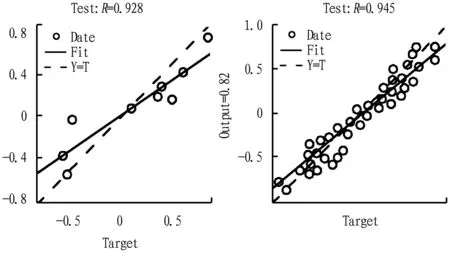
Fig.3 Regression test of samples established based on neural network
In addition, a comparative test was made for the calculation accuracy. The calculation accuracy of the traditional neural network algorithm is decreasing with the increase of computation. From Fig.4, it can be seen that in the absence of algorithm, the test data for water resource utilization are less, the regression line is lack of credibility, and the error is likely to be larger. But supposing that after the neural network algorithm, since the accuracy of the calculation for the data is improved, it not only improves the accuracy of the data, but also further reduces the error of the forecast value of water resources utilization, it can be seen that with the join of the neural network algorithm, the accuracy of most points in water resources utilization test is high.
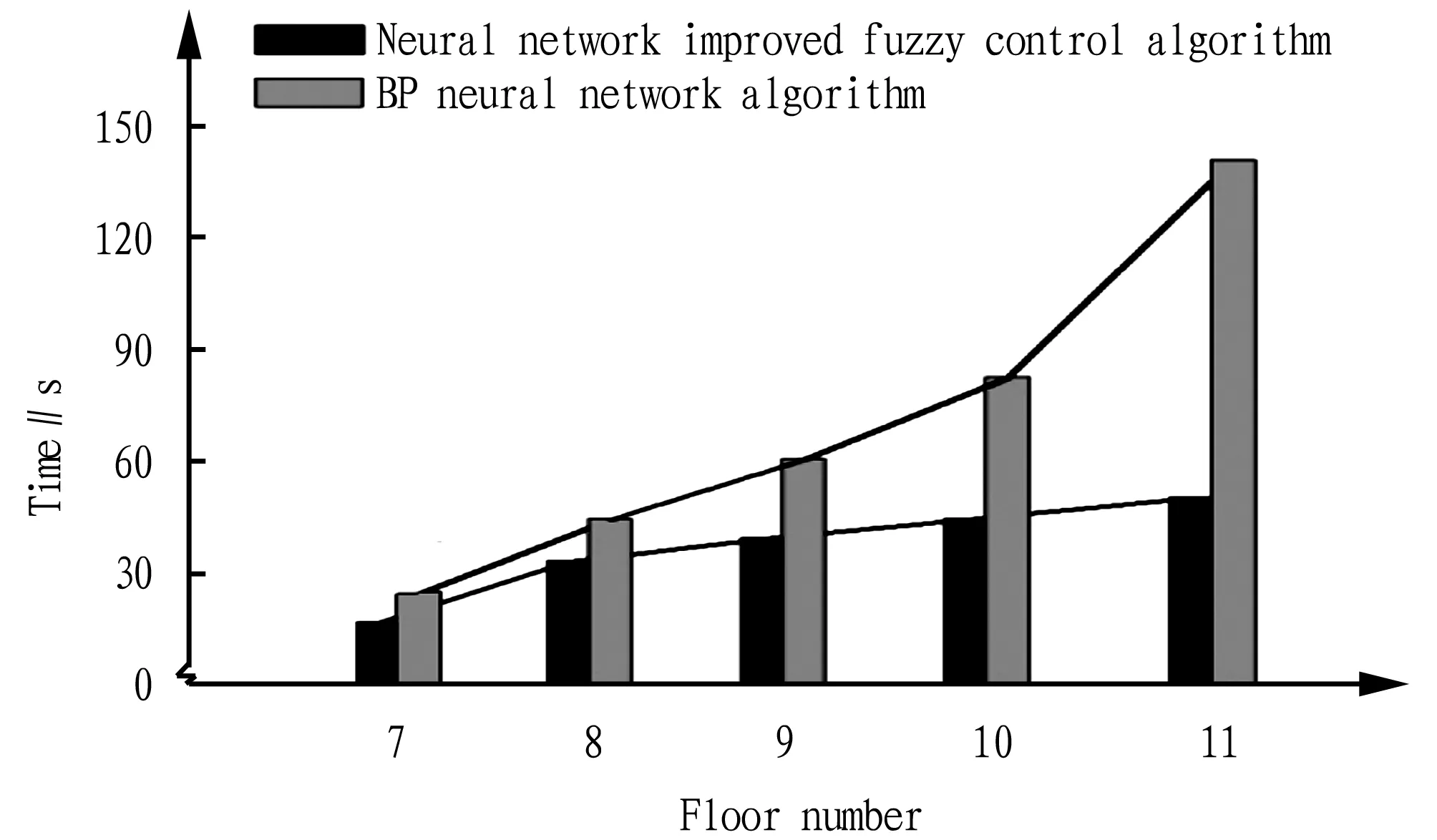
Fig.4 Comparison of two algorithms for calculation time
The observation of the above data is found, the computation time of the traditional 2 neural network algorithm is higher than that of the algorithm in the beginning. The computation time of the traditional 2 neural network algorithm is higher than that of the algorithm in the beginning, and through our observation of the slope of computation time, it is found that the increasing rate of computation time of traditional neural network algorithm is exponentially increasing. The computation time of the eleventh time has increased to 130 sec, which has increased 11 sec compared with the first 20 sec, and the computation time of the algorithm used is less than that of the neural network algorithm from the beginning. The calculation accuracy has fallen from 98% to 61%. This traditional algorithm is obviously unable for the use of the calculation of large amounts of data, the calculation accuracy is low. But through the optimization, the accuracy of calculation has not changed significantly with the increase of computation items, and it was at the state of over 95%. The algorithm with such accuracy has fully met our requirements for calculation accuracy, which shows that the accuracy of the algorithm has met our needs. The other is our analysis of the offset of calculation results, and the offset of the calculated results of the traditional algorithm is two times that of the optimized result. If the offset is too large, the result will be unstable, and there may be a large deviation of data, which directly affects the usability of our calculation results. The offset of the calculated result of optimized algorithm is not more than 0.13. However, if the corresponding algorithm is removed, it is found that the overall accuracy is still fluctuating, but the overall accuracy is on the decline. It can be seen that the neural network prediction model has high feasibility for the application of water resources utilization. The effect of this offset on the stability of the overall calculation is not very large, and it meets the precision requirements of the calculation results, the optimization of this aspect is successful.
5 Conclusions
In the process of agricultural development in China, the research on water resources utilization management and remote control technology has never ceased. Therefore, the utilization and management of agricultural water resources under the agricultural safety target based on fuzzy neural network algorithm is proposed. By deeply researching the characteristics of fuzzy neural network algorithm, the water pressure detection model and the remote control model from the perspective of computer mode are worked out. In order to achieve the connection between remote control and water resources testing, neural network algorithm is added, an optimized research model is constructed based on the hierarchy of data. The existence of the model solves the limitations of traditional mode, and the efficiency is greatly improved, this is the full embodiment of computer technology. In the test of neural network algorithm, first of all, a simple test is made for the operation feasibility of the algorithm. In the test of stability and efficiency, through the increasing number of calculated data, the displacement peak of the traditional neural network algorithm has increased by 0.29, and however, the peak displacement calculated by the improved fuzzy control algorithm here is only increased by 0.15, which is almost as small as twice as small. The whole research
shows that the research is feasible, but the simulation process is not explained further here.
杂志排行
Asian Agricultural Research的其它文章
- Research and Application Progress of Silk Fibroin Membranes
- Application Potential of Quinoa as Forage
- The Agriculture-Tourism Integration to Promote the Rural Revitalization: Taking Tea Industry-Agriculture-Tourism in Lishui City as an Example
- Delimitation of Grain Production Functional Zones: An Empirical Analysis of Fangzi District in Weifang City
- Research on the Curriculum Construction by Promoting Teaching Using Competition Based on Bloom’s Taxonomy of Educational Objectives
- Effects of Fermented Nano Chinese Herbal Medicines Replacing Antibiotics on Production Performance and Carcass Quality of Growing-Finishing Pigs
